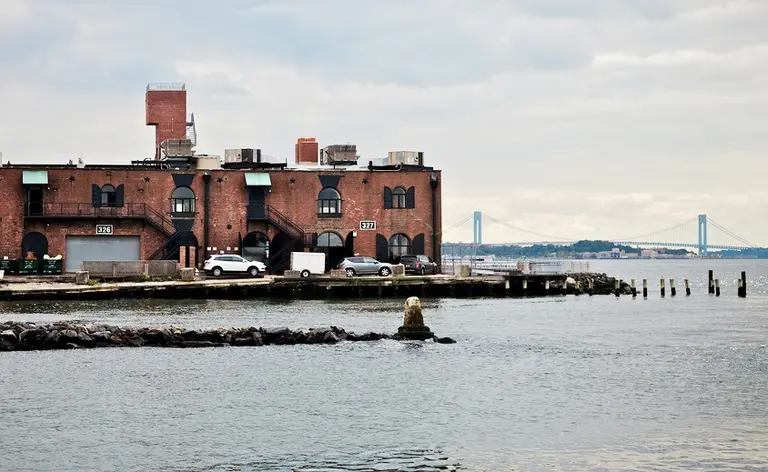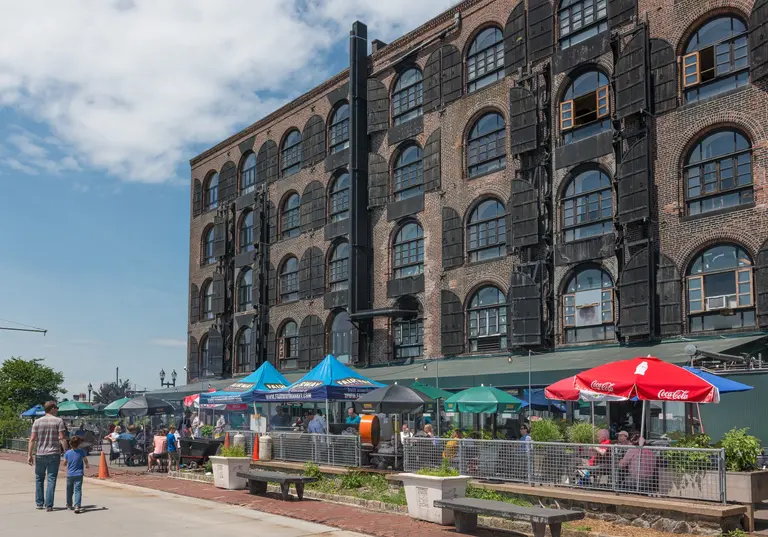September 13, 2016
What do you get when you cross the new-waterfront nature of Battery Park City with the previous underutilization of Hudson Yards, and throw in a little Brooklyn? This massive proposal from big-time construction and engineering firm AECOM that would turn a huge section of the Red Hook waterfront into a residential mega-development with more than 12 towers, 45,000 units of housing (25 percent of which would be affordable), an extension of the 1 train, acres of parkland, and "waterfront-flood protections that would revitalize and protect the low-lying neighborhood from storms and future sea-level rise," as Crain's first reported.
AECOM is presenting the idea today at the NYU Rudin Center for Transportation. They've already admitted that it "lacks key details" like hard costs, but they do estimate that one of their scenarios could generate $130 million in revenue for the city. The sites in question are the 80-acre Red Hook Container Terminal owned by the Port Authority of New York and New Jersey, a similarly sized parcel along Columbia Street overlooking the Gowanus Bay that's owned by the city, and unused land at the Red Hook Houses. Under their plan, the sale or lease of land to developers, would fund the aforementioned infrastructure projects.
More details and renderings ahead


